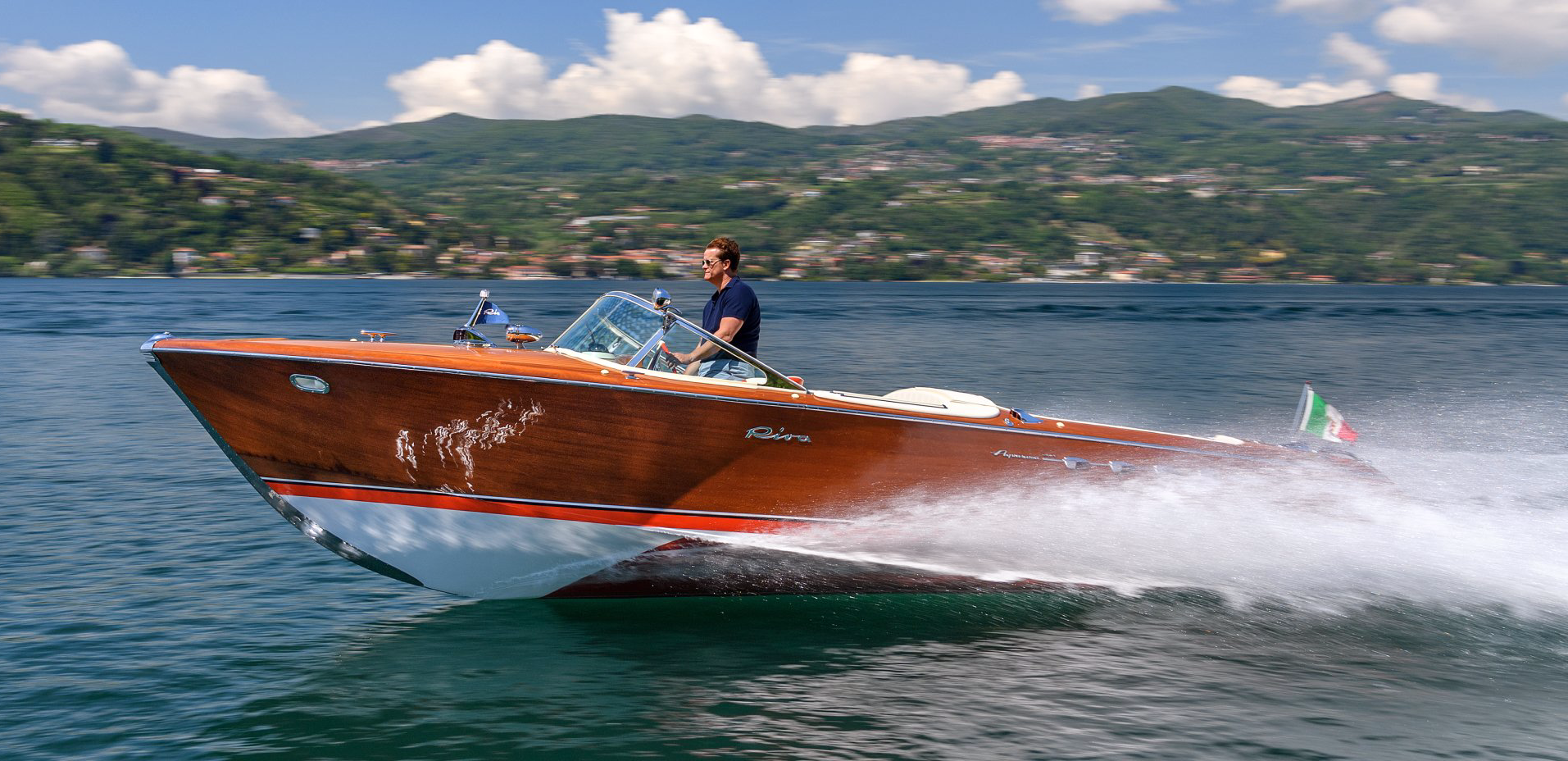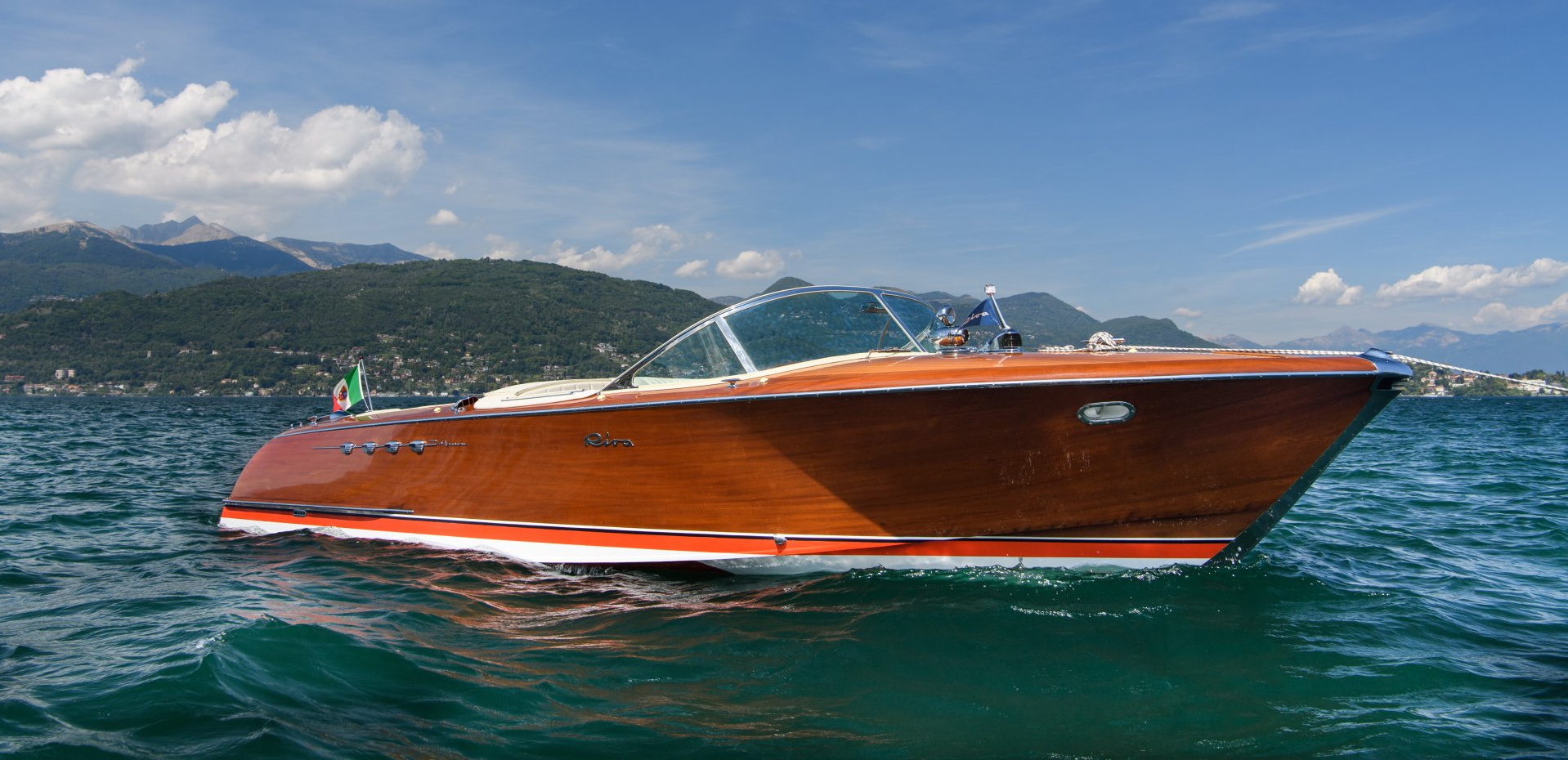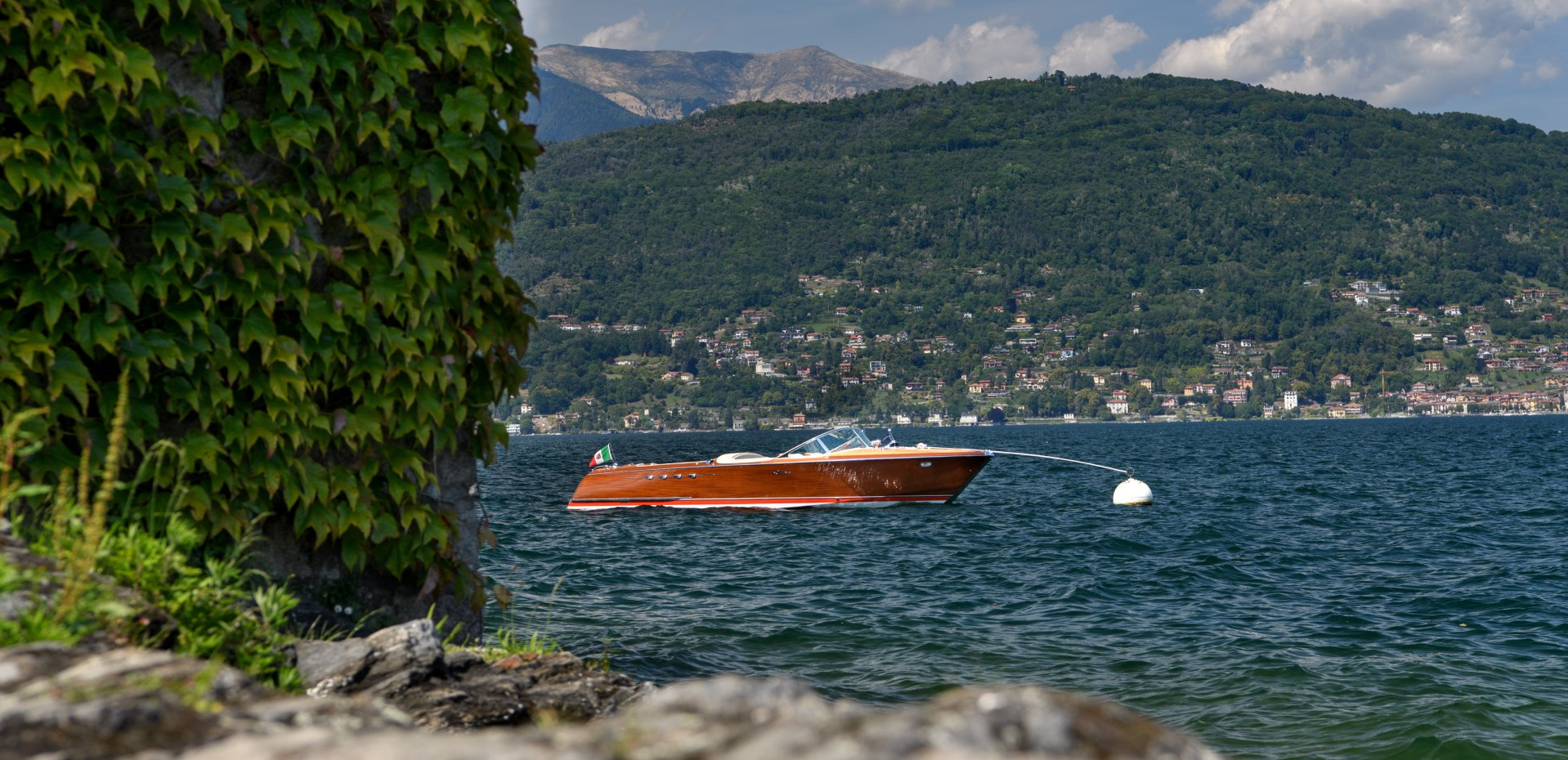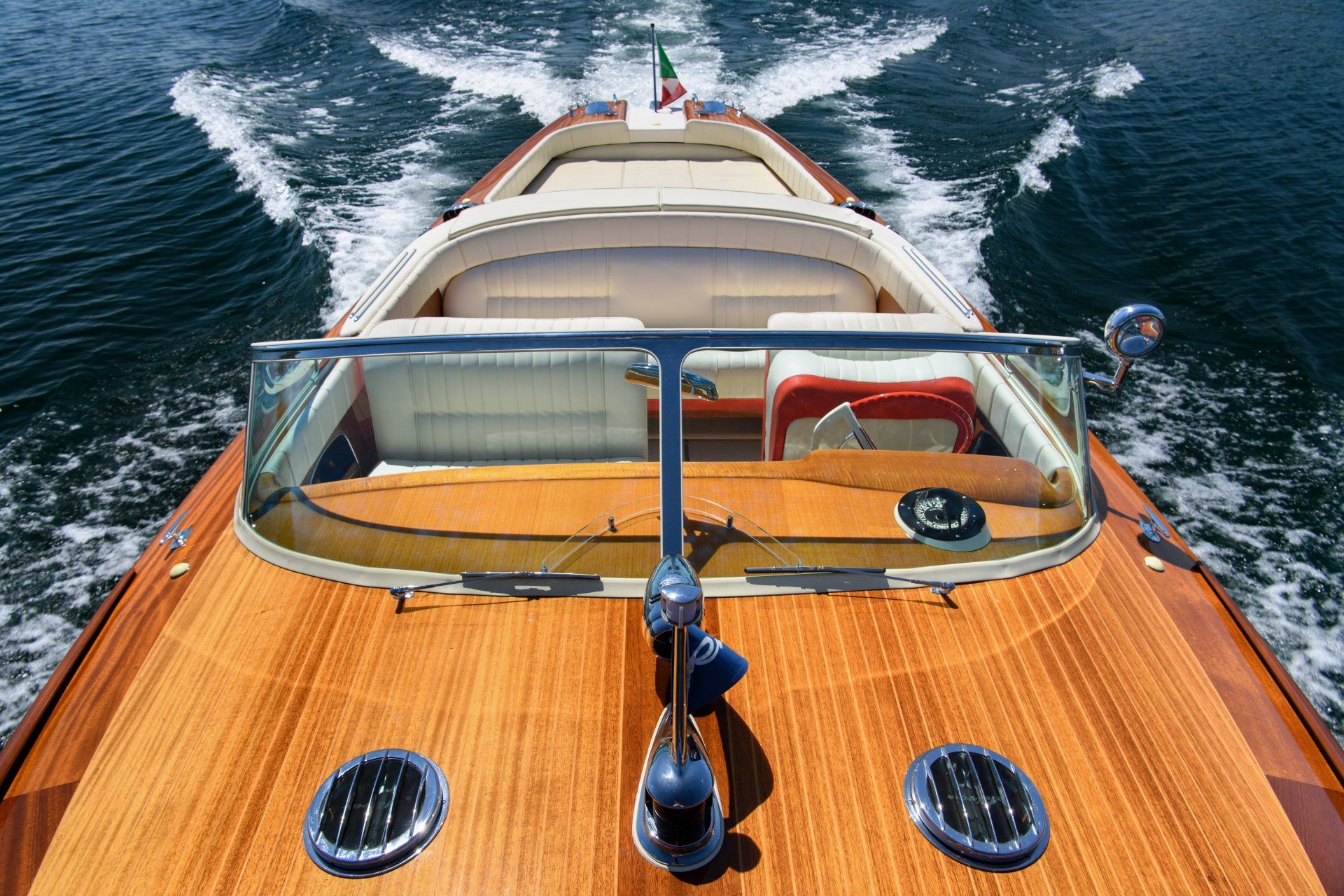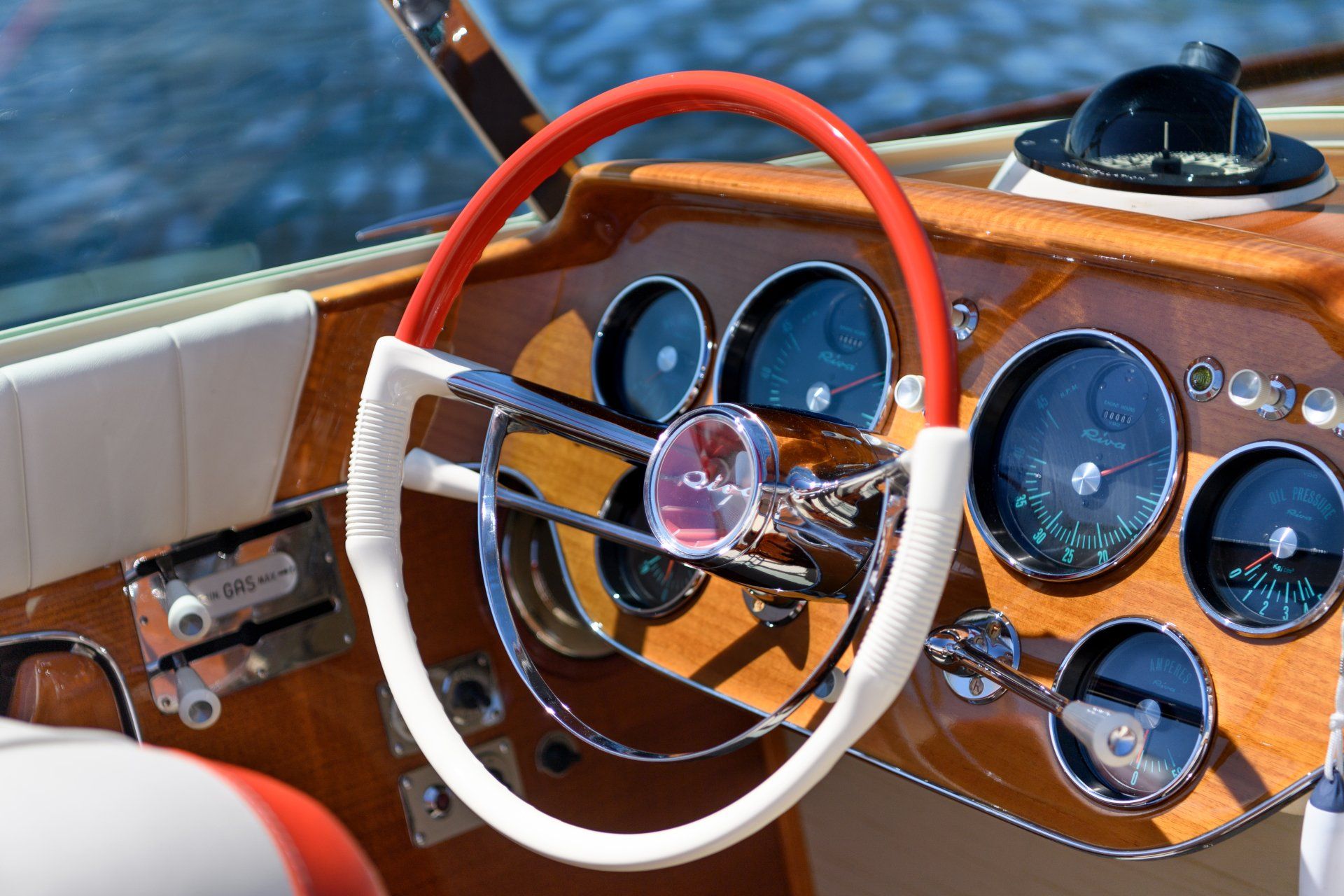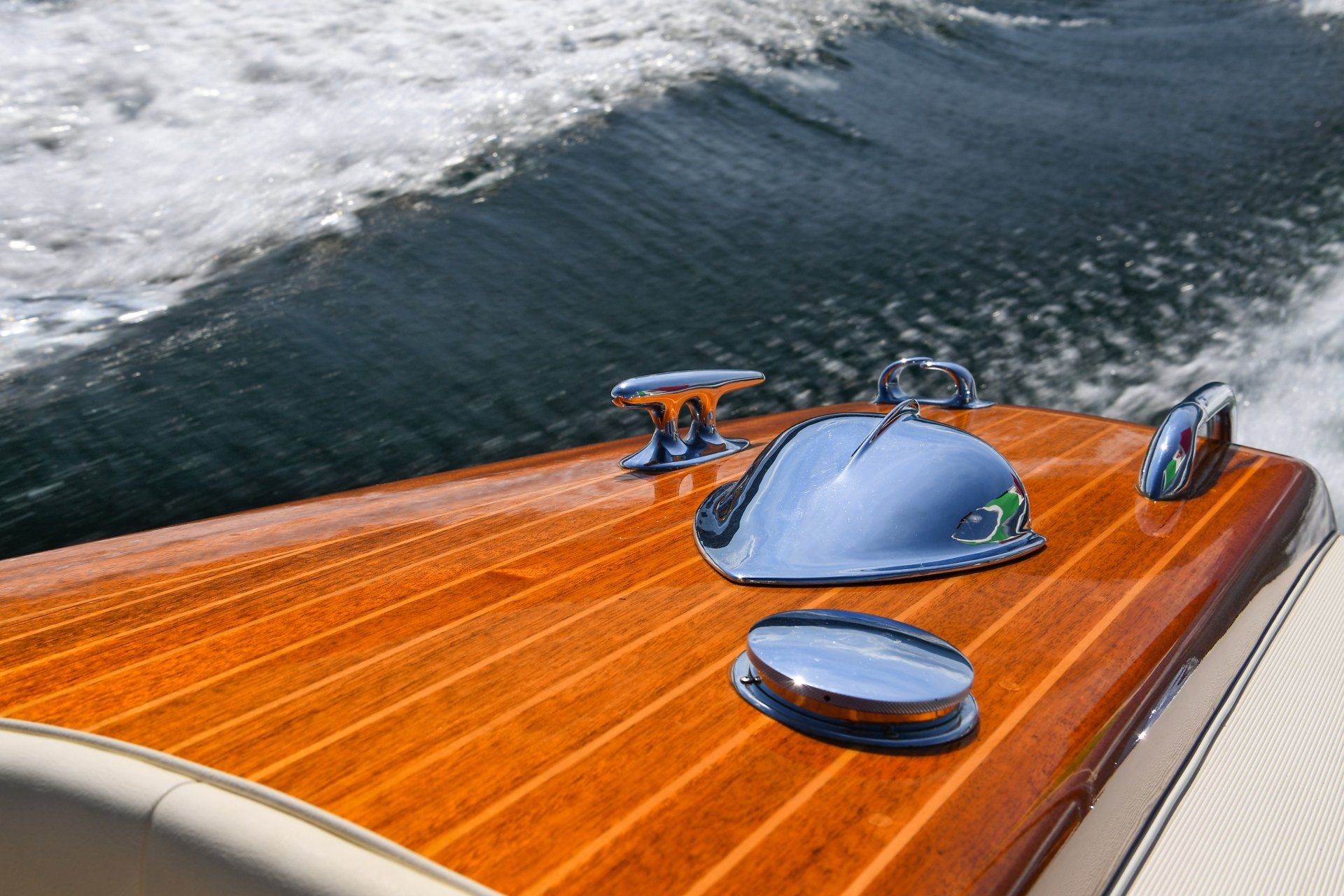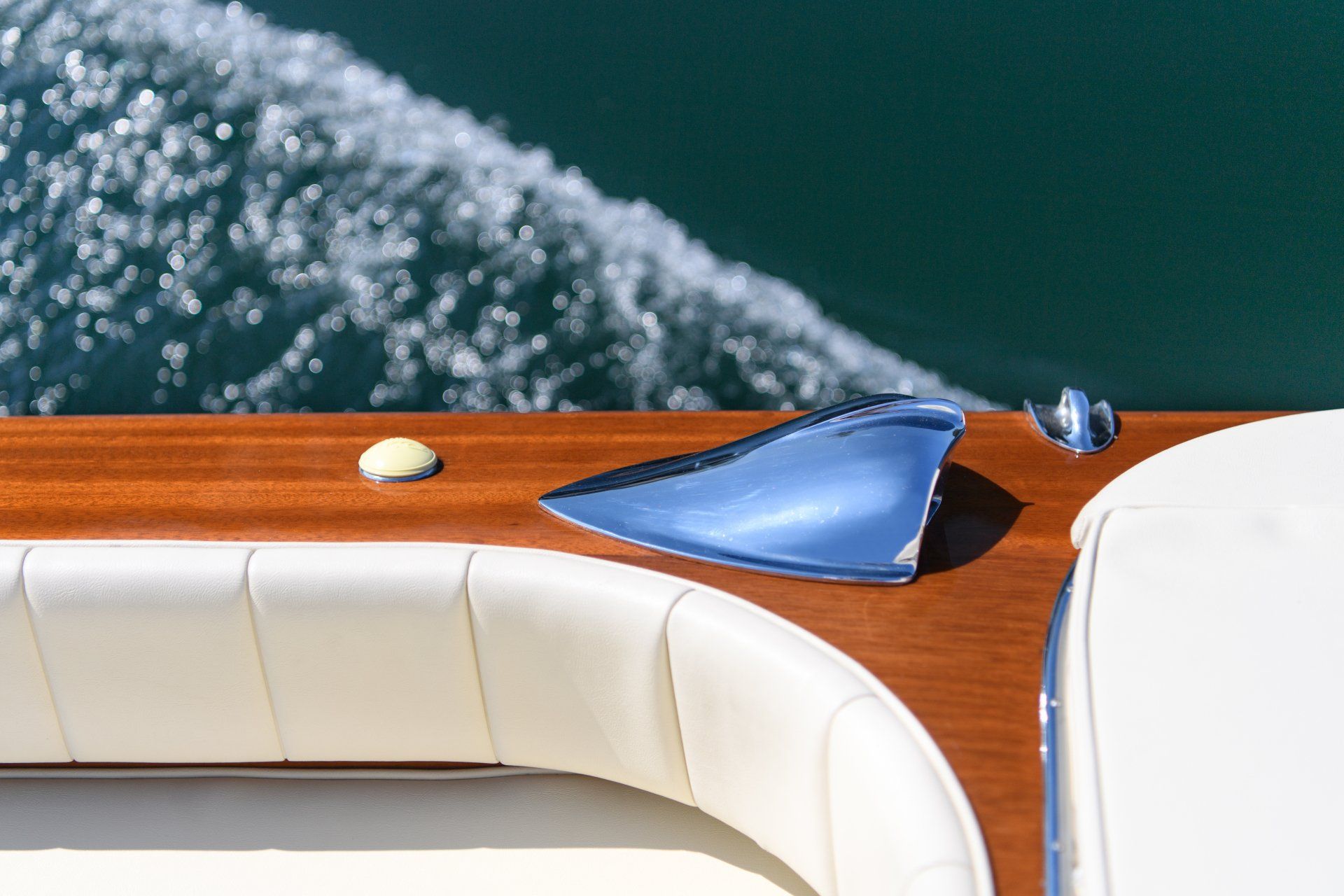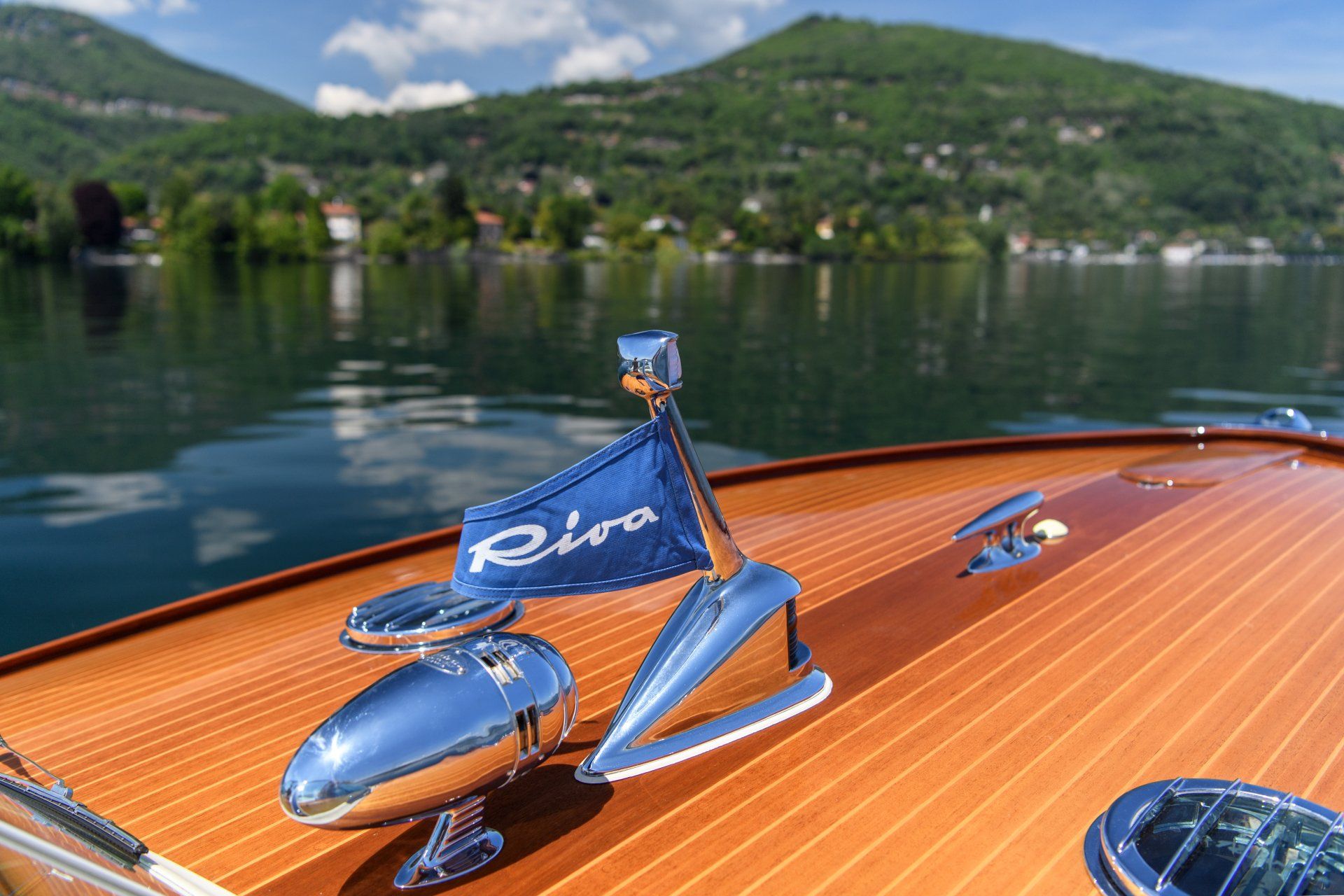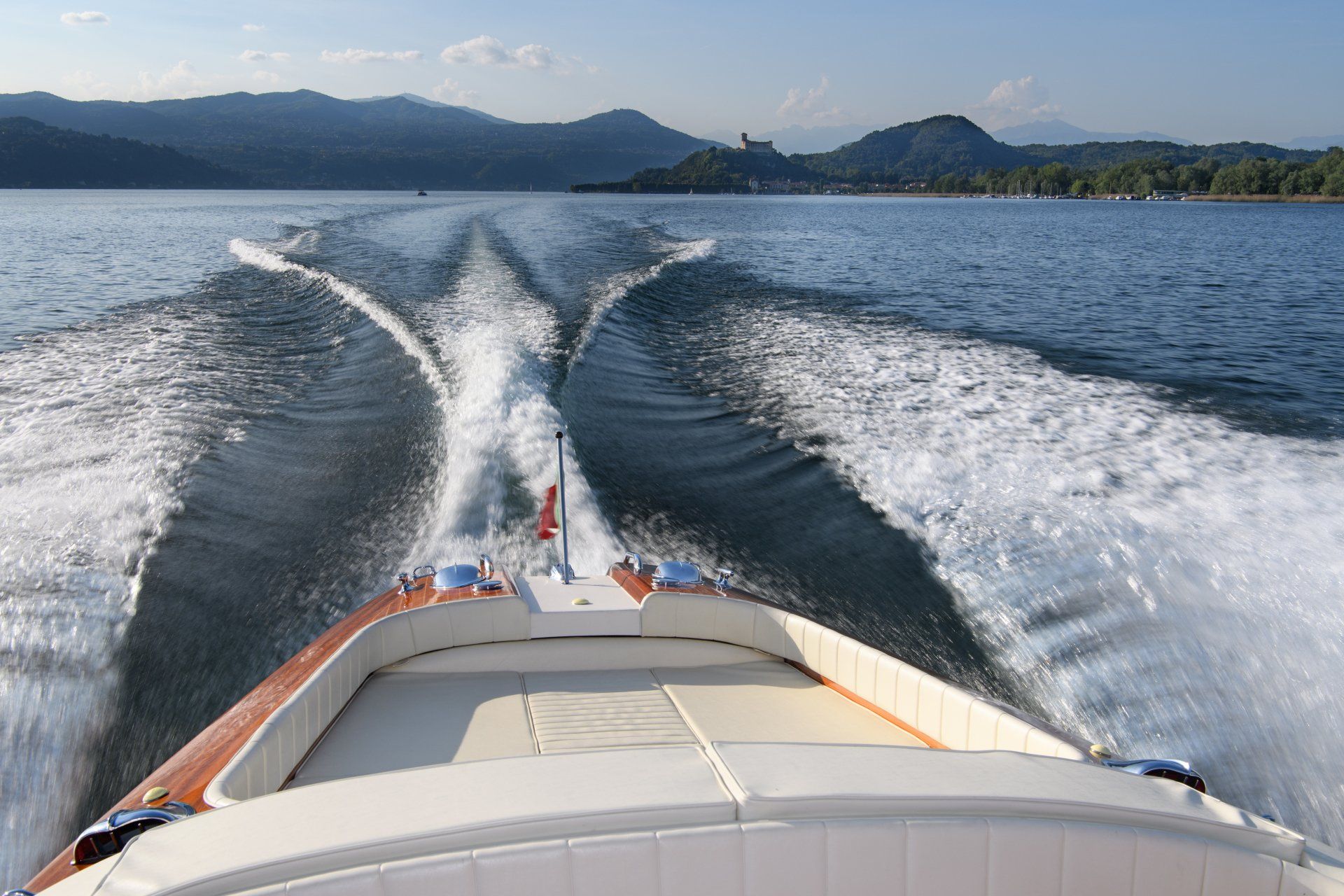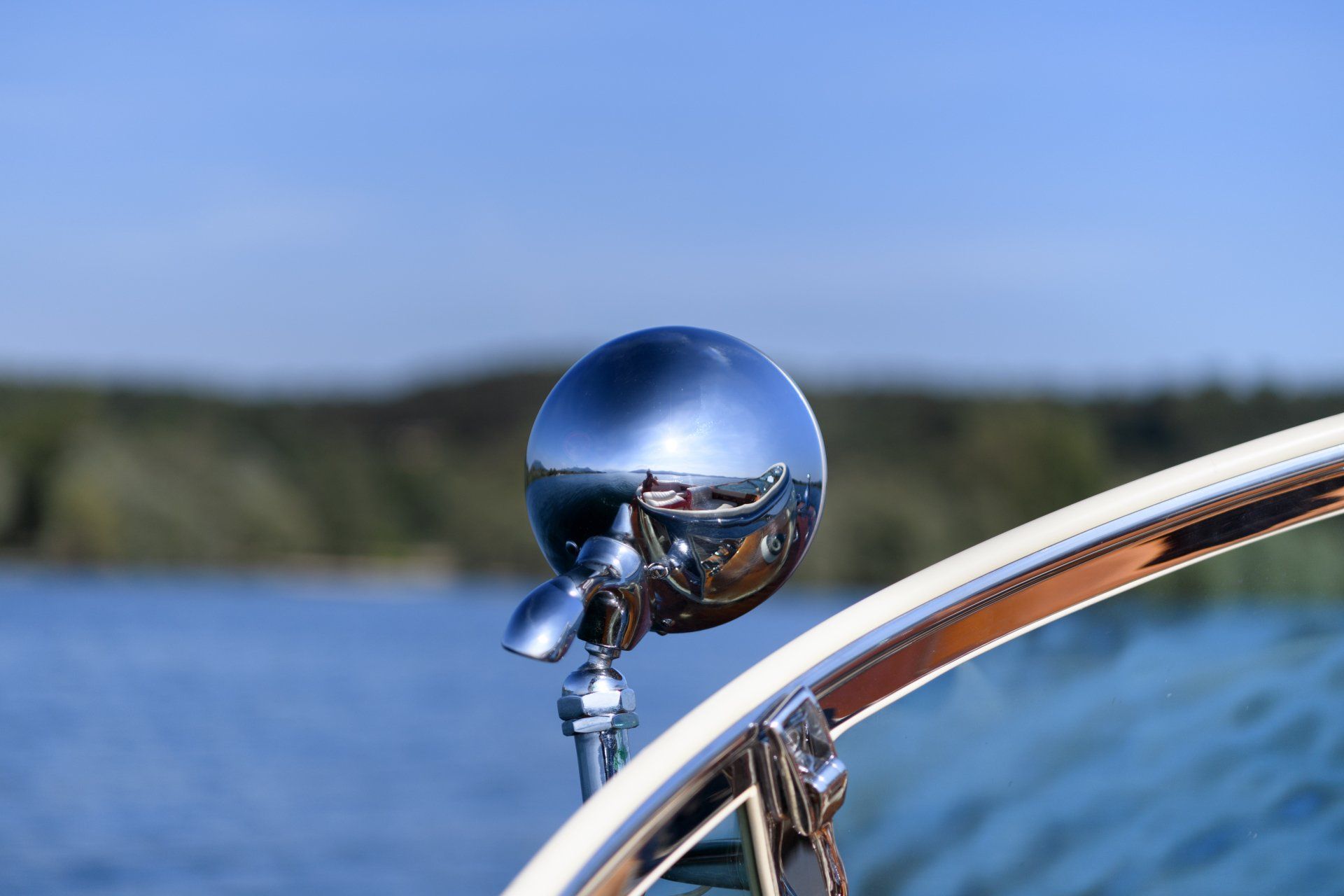- Riva Aquarama, the most famous motorboat in the world, man’s most beautiful creation, the Ferrari of the boat world; no object, created by man, better symbolises the carefree, glamourous, sporting and beautiful lifestyle enjoyed by the charmed few who were fortunate enough to have been young and rich during the Jet Set era of the 1950s, 1960s and 1970s than the Riva Aquarama. The flagship boat of the Riva range. In terms of beauty, performance and craftsmanship, the Aquarama, to this day, is the undisputed king of the sea and of the lake. Legend has it that Carlo Riva once sent Gianni Agnelli, The ‘Rake of the Riviera’ out on one of his Aquarama’s setting Agnelli, a great sportsman, the challenge that if he could turn the boat over then it would be his – suffice to say Agnelli left the lake empty-handed.
The most famous of Carlo Riva’s designs, the Aquarama, has become, over time, a nautical legend in its own right, as well as the pinnacle of the Riva range. In origin, the Aquarama was a direct descendant of the Tritone, upon whose hull it was based and like the Tritone it was always a twin-engine boat. The Aquarama became Riva's symbol as soon as it was presented at the third International Nautical Fair in Milan in November 1962. The presentation slogan fully embodied the key aspirations: "Sun, sea, joy of living!" Its evocative name ‘Aquarama’ was inspired by the widescreen Cinerama movie format, popular in the USA in early 1960s and this clever name no-doubt contributed to its mythical status.
The Aquarama prototype was “LIPICAR”, whose name derives from a combination of the first names of Carlo Riva’s two daughters, Lia and Pia as well as his own, last but not least. The prototype Aquarama was an evolution of the Tritone. 8.02 m in length x 2.62 in width with seating for 8, 2 berths at the bow and power from two Chris-Craft petrol engines of 185 HP each.
Unlike the Tritone, whose rear deck and engine covers were fully enclosed, proudly displaying metres of beautifully polished and filleted mahogany wood, the Aquarama incorporated the open sunbathing area of the Tritone Aperta aft of the main cabin arae. Several other new features, were designed including separate front seats and a central non-slip gangway aft, which allowed easier access to the water at the back via a separate folding ladder.
Following comprehensive sea testing of the prototype, LIPICAR, the Aquarama entered production in 1963. The hull was identical to that of the Tritone Aperta, whose production had finished. Numerous technical and functional updates were incorporated into the new flagship model the most obvious being the anchor housing in the bow, closed under a hatch in the bow deck. In addition, a washboard around the bow stringer, similar in concept to that on the Super Ariston, was fitted and a polished Honduras dashboard beautifully displayed a comprehensive array of new VDO instruments. In fact, the dashboard of the Aquarama, with the instrument bezels glistening in the low sun and the classic Riva wheel, is a thing of sheer beauty.
The front seats were now separated as opposed to being a full-width bench seat and allowed for easier movement around the cabin as well as access to the front berths. The rear of the front seats hosed a charming and practical picnic table with holders for bottles and glasses on one side and a folding pocket on the rear of the driver's backrest. A non-slip gangway set into the stern decking made getting in and out of the water a simpler and less precarious affair and the rear sunbathing deck was large and extremely inviting – the perfect spot for a picnic with friends.
The hulls of the very first Aquaramas were initially still made in the traditional way using planks, as per the outgoing Tritone, although moulded hull sides were designed and fitted soon after production had got under way. The upholstery of the first models was white ribs with black borders and orange trim although a number of boats, upon request, were finished completely in cream. From the end of 1963 upholstery of the Super Aquarama was ivory coloured with pastel green borders.
The Riva Aquarama is the ultimate classic wooden motorboat. Timeless beauty, reliable and strong American muscle powering it to a top -speed of 73/75kph depending on the motors installed – fast even by modern standards and handling that could not be beaten – even by Gianni Agnelli.
But this was not enough for the progressive Carlo Riva, he demanded more. During the production of three Series of Aquaramas, the option of a Super Aquarama had always been available for discerning Riva buyers wanting the very best. The main difference was the installation of twin big block Chrysler V8 motors of a monster 7 litre capacity each, providing the uprated model with an immense amount of power and torque making it the fastest Riva of all, capable of a highly impressive 88kph in its ultimate configuration. Super Aquaramas were badged as such and were slightly longer than the standard model. 288 examples of the Aquarama were produced and 203 examples of the Super Aquarama.
AQUARAMA SPECIAL
Such was the ongoing demand for the Aquarama that a Special series of boats was introduced in 1972 following a proposal made by Architect Giorgio Barilani in 1968. Barliani had drawn-up designs to modify the Aquarama's stern, making it more practical. The hull was lengthened, and the transom was now of trapezoid shape and raked more steeply towards the sunbathing area giving the Aquarama Special a much refreshed and more modern line. Gone was the need for an external ladder for re-boarding following a swim and many other updates were incorporated.
The mahogany dashboard was updated with new VDO instruments while the distinctive Aquarama wheel continued to be used for the first examples. Lever control switches with a rubber cap replaced the push-pull ones previously used and the cabin ceiling was fully upholstered from 1974. The dashboard was changed again in 1977, a new, smaller and more modern wheel was designed by Barliani and supplied by Momo and new instruments with a grey face became standard. The Aquarama Special continued to be built, albeit in ever declining numbers, all the way through to 1996, long after Carlo Riva had left the Company.
Today, Specials remain a very popular choice in the Aquarama line-up, possibly because of the modern touches and possibly because they are generally younger and have not suffered the ravages of time as much as the earlier examples. In total 278 Specials were built over a 24-year production run.
The Aquarama, in all of its various configurations, remains today, one of the most desirable, instantly recognisable, glamorous and collectible motorboats of all-time.
PHOTOS: TIM SCOTT, FLUID IMAGES
MOTOR BOATS CURRENTLY AVAILABLE
RIVA
MOTOR BOATS COMING SOON
Please contact me for further information or to discuss the TYPE of motor boat that you are thinking of selling.
